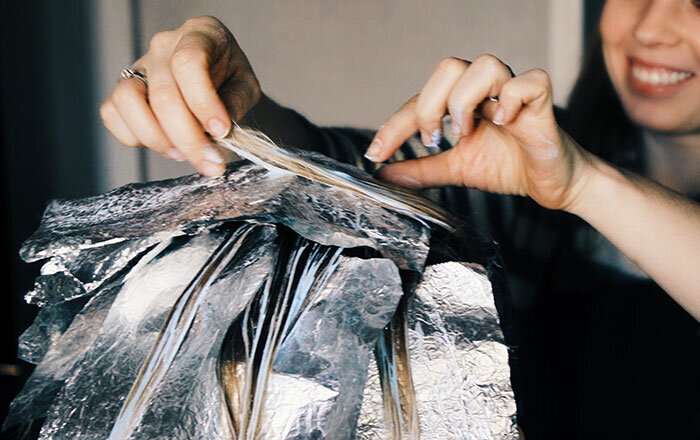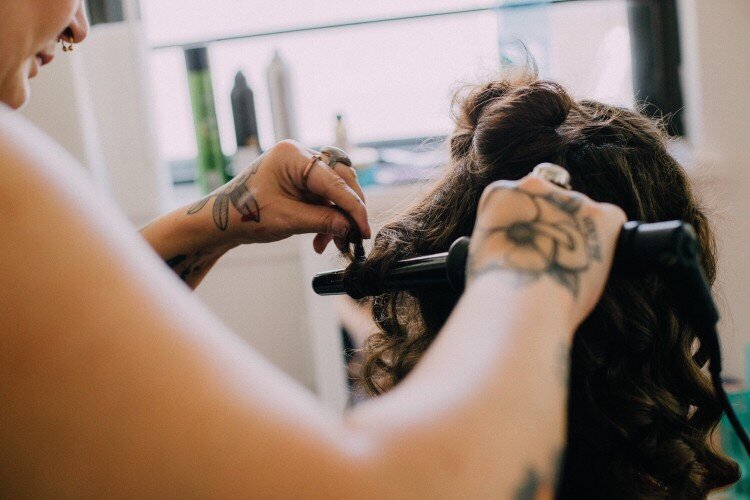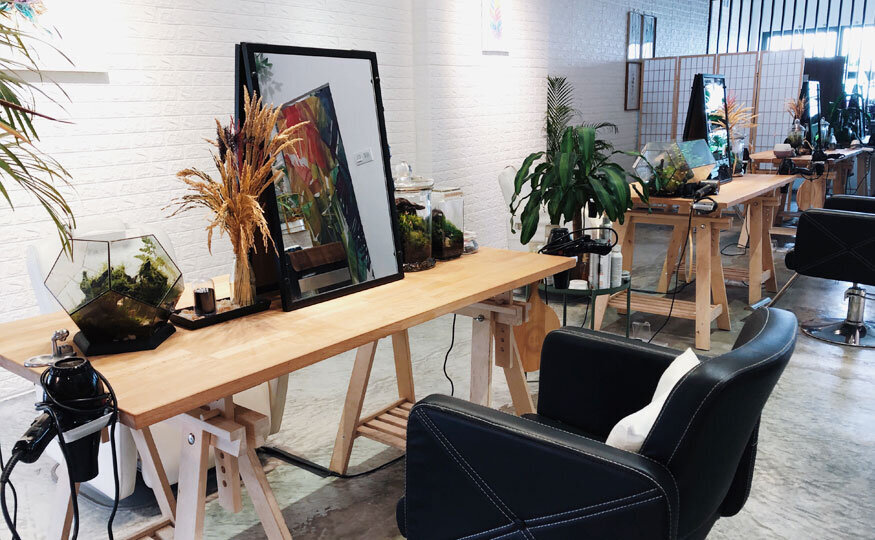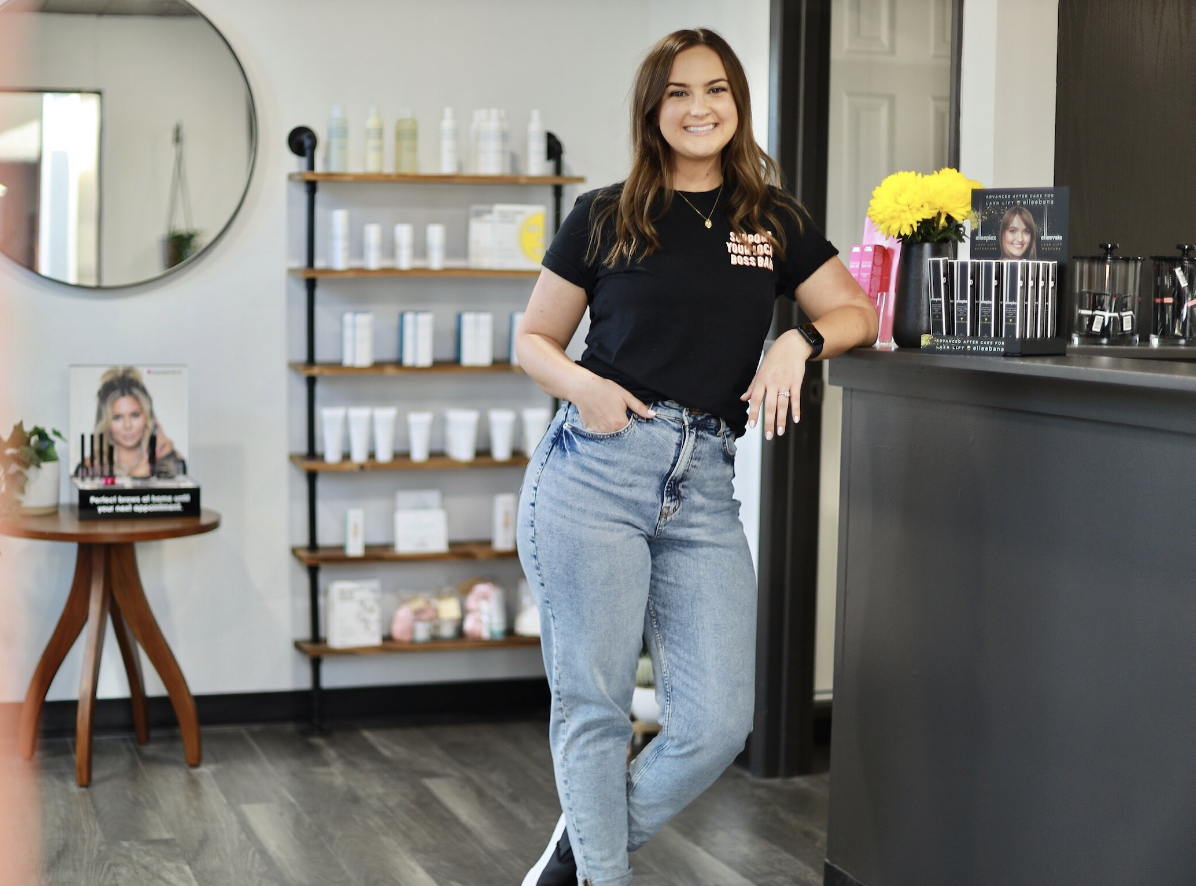How to get started as a salon suite renter and make a business plan
Click above to watch the video version, or keep going for the written guide!
As stylists we are always thinking about how we can go out on our own, but how do we know when we’re ready? When is it the right time financially in our career to go out on our own? What are the challenges we face?
When we go from stylist to business owner on our own, we are putting on more hats than we’ve worn before. Today we’re chatting all about booth renters and suite renters, and how they can build their business, make more money, and get started going out on their own.
In this guide and interview, I speak with Nina Tulio, owner 1NAgency, about all of the numbers stylists need to know before they go out on their own as a salon booth or suite renter.
Nina Tulio is in her 24th year in the beauty industry. She started out as a hairstylist and was a hairstylist on and off for 20 years.
Nina sold her salon in 2016 and started 1NAgency, her consulting business. She is now in the fourth year of her consulting business where she works with both stylists and salon owners around the country and does virtual coaching and online education for stylists and salon owners worldwide.
Nina is particularly passionate about salon suite renting, because she’s seen so many stylists and beauty business owners go out on there own and either lose money, or struggle to make ends meet. Here is her advice for how to thrive and grow on your own, whether you’re a hairstylist, esthetician, waxer, or anywhere else in the beauty industry.
How to know if you’re ready to move in to a suite
Are you ready to go out on your own as a stylist? I started this interview off with Nina by asking her advice on when stylists know it’s the right time to go out on their own.
Just because you're a talented and busy hairstylist, it doesn't mean that you necessarily are going to be a great business owner, because you're now putting on a different hat. When you are a salon owner, it's different because now you're leading a team of people, and you’re 100% responsible for growing and managing your new business.
First things first, you really want to make sure that you're financially secure enough to move into a suite. If you're going to move into a suite, you have to have enough working capital.
Even though moving into a booth or suite is not as involved as moving into a separate brick and mortar building, you still have to design that suite and decorate it to make it your own. There might be furniture in there already, but maybe you want to make it your own by swapping out furniture or adding in sinks. Nina advised that it’s important to have a little nugget of cash for your salon buildout (because you will want this!)
You also want to set aside at least two to three months of your expenses for a cushion. Now that you’re moving out on your own, you are a one-man show. It’s so important to have this cushion if something happens to you, and you aren’t able to operate and see clients for a period of time. With the COVID pandemic, we all saw how unpredictable the world can be.
Unique challenges for suite renters
While there may be a handful of stylists who do this that have been successful, you want to be at least 85% booked with clients before you start thinking about moving into a suite. Nina advised that when you move into another location, whether it is a suite or booth, be prepared for about a 30% drop in clientele and revenue, as not everyone will follow you over. It’s important to be prepared for this!
Being 85% booked out at least gives you a little bit of cushion, then when you do move into a suite or booth, you can build yourself back up without having a huge impact on your revenue.
So if you are a commissioned stylist, or if you're thinking about converting to a suite or a booth rental, wherever you're at in your career, you have to ask yourself an important question: are you really going to be making that much more money? Because now there's a time commitment that goes along with being your own boss. You are now the person taking care of all of Instagram, Facebook, and other marketing and advertising. You are also the person taking care of your books. So you’re investing a lot more time into this. This is why being at least 85% booked out is nice, so you’re not going to have to spend too much time attracting new business but retaining the business that you have.
Tips on setting up your business plan
Do you actually need a business plan before you go out on your own as a suite renter?
“Absolutely yes,” says Nina. If we want to consider ourselves entrepreneurs or solopreneurs, then we have to take it seriously. Nina highly recommends doing a business plan because it lays out what your next two years are going to look like in terms of revenue and then your expenses. Typically if you've been in the business for a while and you're busy and you have your clients, you can take the revenue, service sales, and retail of what you have now and convert that into a business plan. A business plan just lays everything out pretty systematically for you.
You also want to make sure that you have timelines laid out for the next six months, one year to even two years so you can see where you’re growing and where your business is going. Hoping for the best and hoping clients just come to you is not the best plan - especially when you are out on your own.
A business plan allows you to see and dive deeper into your demographic, your target market, your mission, and your vision for your business. Because if you're in a suite, you are running a business. Having a mission, being very clear on who you are, what your brand is, and what your brand promise is, are all things that need to be in your business plan.
If you’re thinking that doing a business plan is a pain, still do it, says Nina. It’s very time consuming and we often as entrepreneurs have a vision and want to act on it immediately, but you want to do it right. It’s so much better to take the time to do it right instead of just kind of taking a stab at the dark and then leaving after a year.
But how in depth do you need to go in your business plan?
There are templates that you can actually use to create your business plan. You can just go on sba.gov and they have business plans on there that are very helpful and very in depth. You can find templates for many different business types there, including beauty businesses.
Some business plans are extremely in-depth, and others are more surface level. It really depends on how specific you want to be. You can also add some market research into your target demographic in your area and key location that will really help you.
Most stylists who are moving into a suite have been doing this for a while so they are aware of who their clientele is, but when you’re starting to think bigger and think of growing and scaling a business, you really want to become very clear on exactly who you are and who you want to spend your time with.
Both in your business plan, and also for your own knowledge, it’s important to close in on your craft and then close in on what really makes you stand out, besides offering every service. Choosing one or two services that you offer and mastering those is a great way to start.
And don’t forget, one of the most important things in planning your business is the “why” behind it all. Your Why is the driving force behind everything that you do, and you have to become very clear on that. Your business plan will help you along with that.
One thing I asked Nina in our interview is about a competitive analysis. In your business plan, should you also look at what other businesses are out there, aka your competition?
Nina says to focus on who you are and what you have to offer, while also keeping one eye on what's going on outside. We can't really dive in and focus on what the competition is doing. You want to know who your competition is and you want to have a feel for what’s out there, but you're not going to base your business off of theirs. If you did that, then your business wouldn’t be your own. A little market research should be done, but it should only be a little bit to determine demographics, not pricing or what they’re doing specifically.
Now let’s talk pricing
When you finally make the move and go out on your own, there will be a lot of changes for you, and a number of big changes for your clients to digest.
But it’s important to keep in mind that humans by nature do not like a lot of change. So when you’re communicating with clients about your big move, don’t tell them: “Oh, by the way, I'm leaving and I'm moving 5-10 miles away, so we're going to take you to a new location. Oh, by the way, I'm changing my color line. And we're having a price increase.” You have to hit people in small doses of info, says Nina.
Apart from that, let’s talk about how to determine what your pricing will be as an independent beauty professional. You should already be planning your pricing with your expenses and your target profit racked into it before going out on your own.
Pricing is determined by a lot of things, including your expenses, how booked out are you, how much money are you spending on education, and what your demographic is. To learn more about Nina’s approach to pricing your services, check her blog post here.
She suggests that you move into your new booth or suite with your same pricing, and then six months later you can have an increase that you announced after everyone’s settled. That gives you six months the understand the ebb and flow of your expenses and where you are with being booked out, so you can adjust your pricing accordingly.
The numbers that you now need to know as a suite renter
Rent Percentage
Your rent percentage means the % of your monthly gross revenue that you spend on rent every month.
It is one of the most important percentages aside from your supplies percentage. Nina says to aim for a 12% rent percentage. That means that your rent makes up just 12% of your revenue. So if you’re making $10,000 a month in revenue, you can spend up to $1,200 per month in rent, or $300 a week.
If you start out with a really high rent percentage, the only way that your rent percentage goes down is if you increase your revenue. Increasing your revenue is very hard to do if you don't have a marketing strategy or branding. So to start off on the right foot, do not invest more money in rent than you absolutely have to.
Nina also notes that on average, the suite renter business model is makes between 25% and 35% profit margins.
Client retention: New and Existing
Client retention is one of the simplest ways for you to continue to keep your business thriving and growing, however it's one of the most overlooked things in the beauty industry. We are often so focused on attracting that we forget to pay attention to our bread and butter clients that are loyal every single day.
There's typically a breakdown of a new guest retention percentage and existing retention guest percentage. It's important to look at both of them; you can probably find this information in your point of sale system or booking system.
The big question to ask yourself is: how often are your people coming back?
There’s a lot of things that go into this. If you have 10 new clients come in this week and only two of them end up returning, that’s a problem. “I would rather have you get five new guests and have all of them return,” Nina says. To increase your retention, it’s all about the guest experience from start to finish.
Frequency of Visits & Average Ticket
There are so many ways to increase revenue in your business, and two of the overlooked ways are increasing the frequency of your guests’ visits and their average sales ticket.
If just six of your guests return to you every four weeks instead of every six weeks during the year, that’s a revenue increase of several thousand dollars over the year.
In the same way, if you increase your average ticket just just $5 (which should be very do-able), depending on how many clients you're doing and what your average ticket is, that could be thousands of dollars over the year.
It’s important to really pay attention to of the clients that you see daily, how many of them are new, and what your average ticket is. Is it climbing or is it decreasing? Do you need to add on services? Are you talking about conditioning treatments and glosses and all those things?
Once you pay attention to the details for a bit, you’ll understand exactly where you need to be, how many people you need to see, and the average ticket. It's a very systematic way of looking at your numbers that should be reviewed every day, every week, and every month.
One golden piece of advice for getting started as a suite renter
My final question for Nina was, what advice would she give someone who is ready to start dipping their toes into either booth rental or suite rental?
Nina’s number one tip is to just be yourself: be your authentic self. Because that is when you attract your perfect clients. That is when you build the best relationships, by showing up every day as yourself and just be true to who you are.
Be prepared for the work, but also just be okay with who you are, and feel good about what you have to offer in terms of value for your guests.
Lovely words to live by!
Are you prepared to get started as a salon booth renter or suite renter? If you have questions for Nina and would like to connect with her, give her a shout on Instagram!







